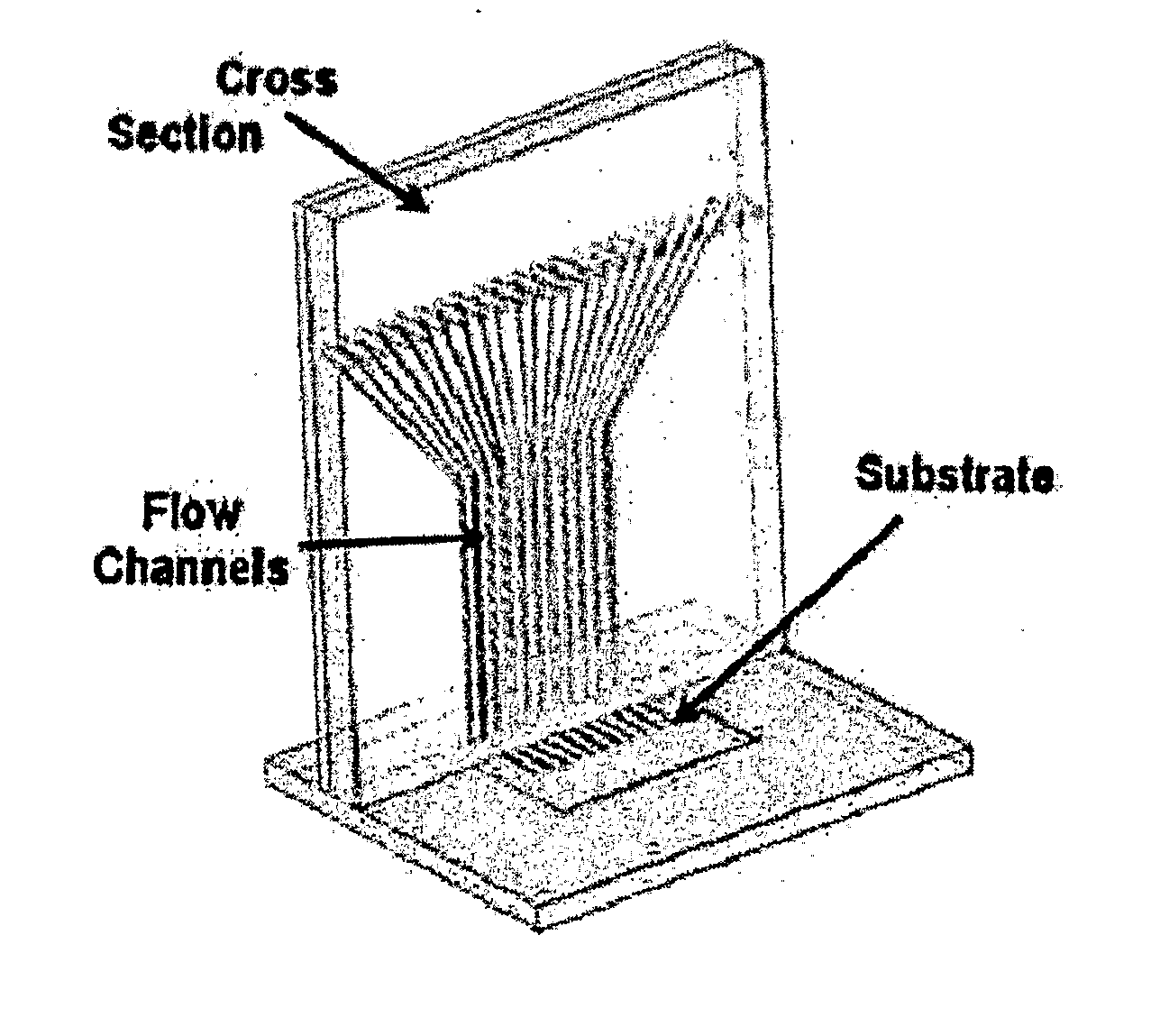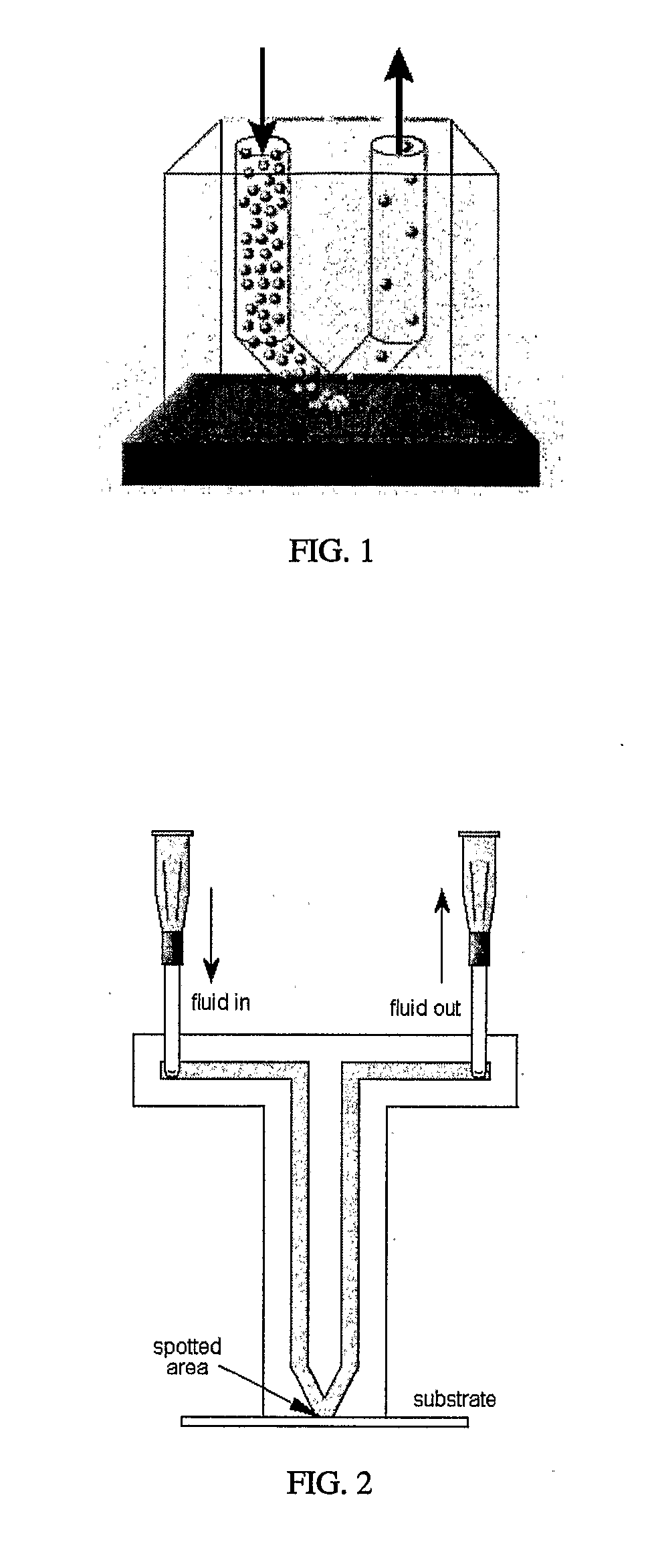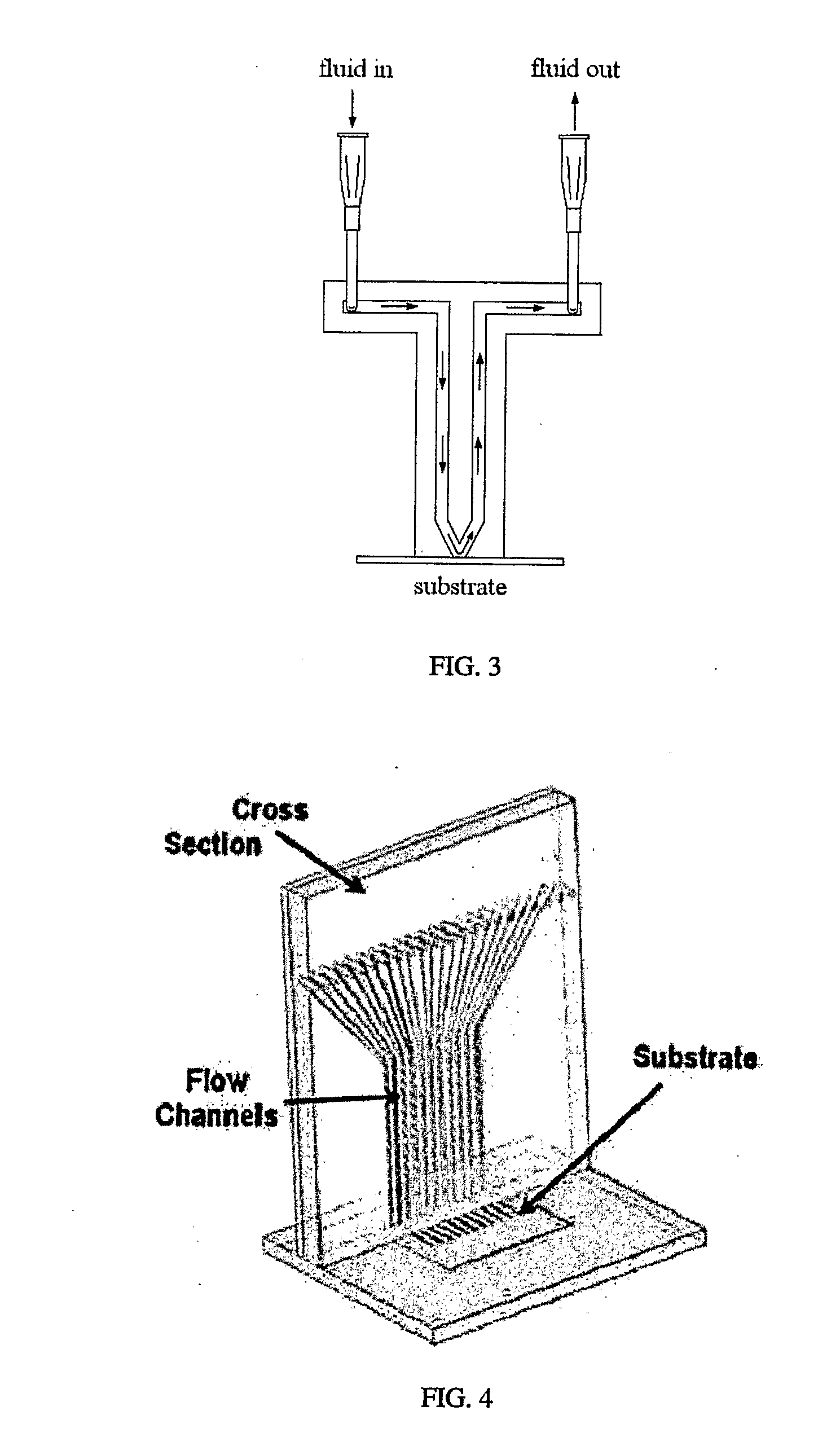Spotting Device and Method for High Concentration Spot Deposition on Microarrays and Other Micorscale Devices
a microarray and high-concentration technology, applied in the field of biotechnology, can solve the problems of severe concentration limitation of the method, the inability to flow a substance over a substrate to increase the spot deposition density, and the inability to achieve the same concentration limitation as the “pens”, so as to facilitate surface deposition, reduce the binding efficiency of a solute, and improve the effect of signal
- Summary
- Abstract
- Description
- Claims
- Application Information
AI Technical Summary
Benefits of technology
Problems solved by technology
Method used
Image
Examples
example ii
4.2 Example II
[0145] Spotter fabrication can be a three-stage process. First, PDMS, or any other suitable substance, is used to form a membrane on a mold (such as a lithographically-defined mold). Protrusions in the mold are used to define the spotting holes. This step creates the spotter face. Second, microchannels are formed on a second mold to connect to fluidic interconnects. Third, the microchannel layer is bonded to the backside of the spotter face. Both the spotter face and the microchannel layer are peeled simultaneously from the molds.
[0146] The membrane molding process yields a smooth lower surface, making spotter-substrate fluid sealing easier when the substrate is smooth. Fluid flow over each spot is individually controlled and spot shapes, number and arrangement can be customized as necessary. The mold may be adapted so that spotter face seals against uneven substrates, such as micro total analysis systems, biosensors, and transducers.
[0147] The spotter face and the s...
PUM
| Property | Measurement | Unit |
|---|---|---|
| Flow rate | aaaaa | aaaaa |
| Concentration | aaaaa | aaaaa |
Abstract
Description
Claims
Application Information
 Login to View More
Login to View More - R&D
- Intellectual Property
- Life Sciences
- Materials
- Tech Scout
- Unparalleled Data Quality
- Higher Quality Content
- 60% Fewer Hallucinations
Browse by: Latest US Patents, China's latest patents, Technical Efficacy Thesaurus, Application Domain, Technology Topic, Popular Technical Reports.
© 2025 PatSnap. All rights reserved.Legal|Privacy policy|Modern Slavery Act Transparency Statement|Sitemap|About US| Contact US: help@patsnap.com



